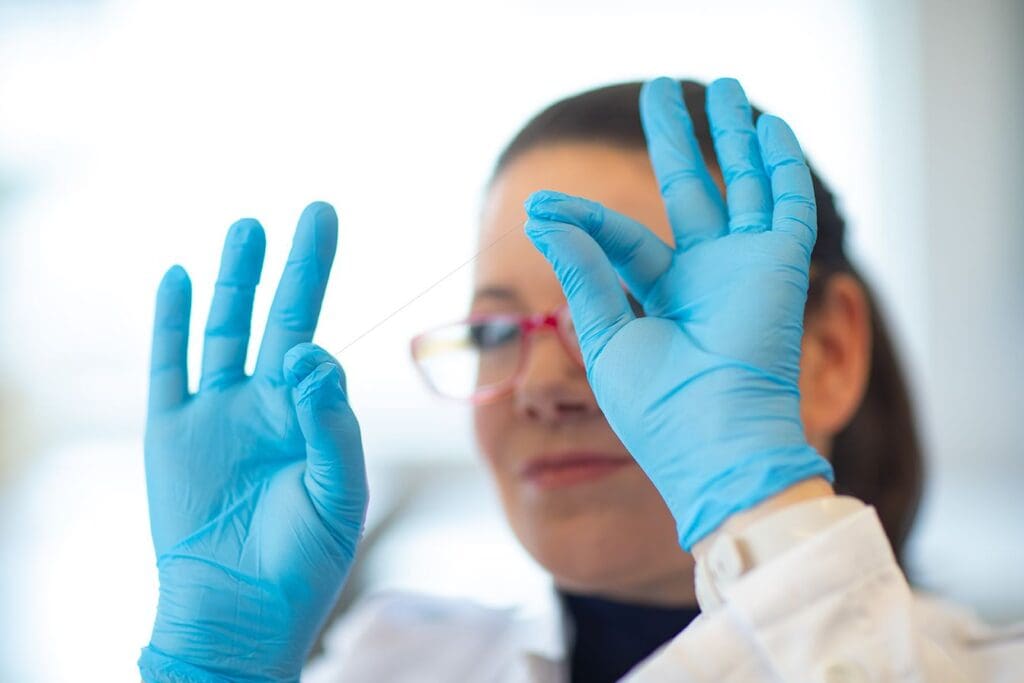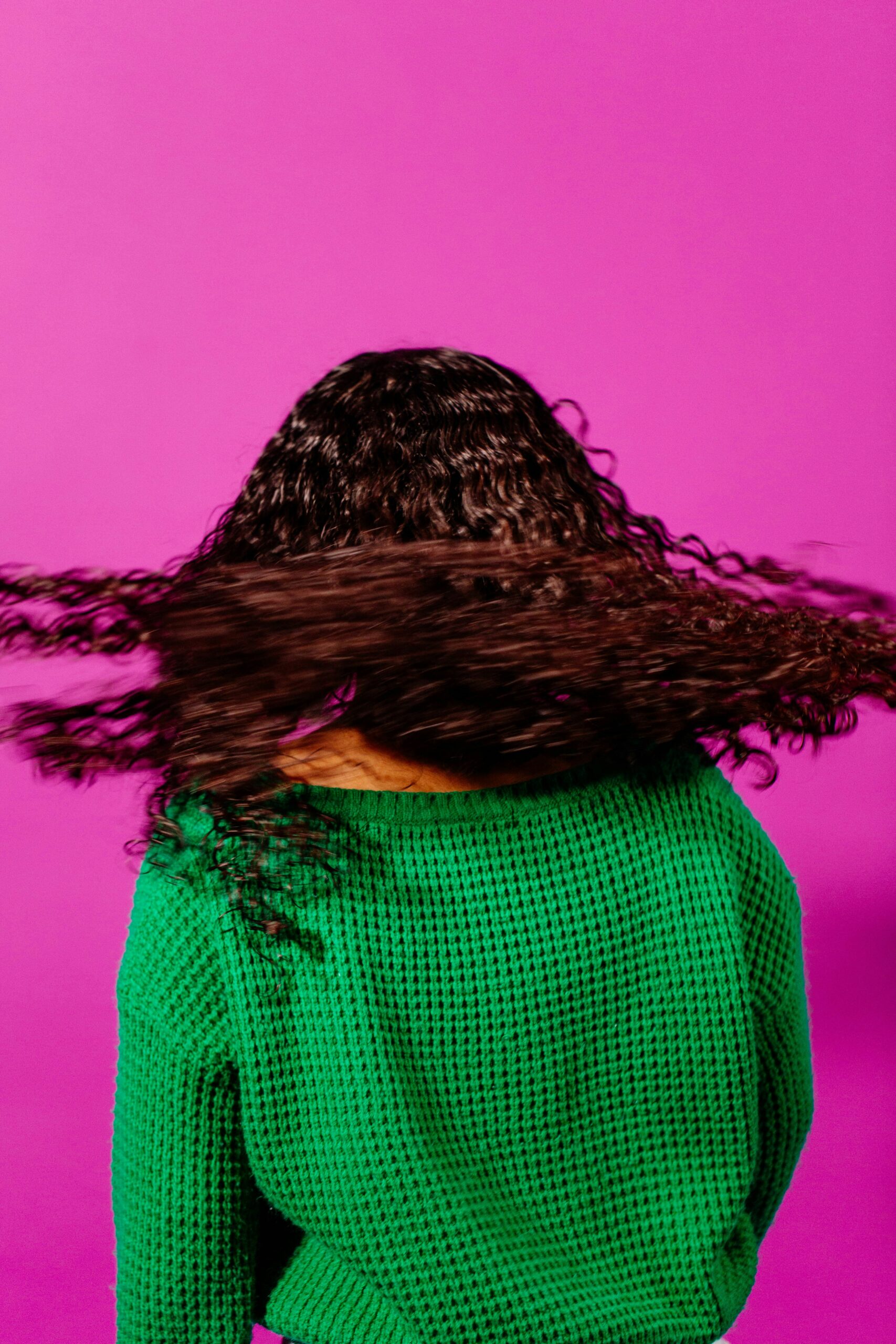Dr. Jennie Christensen from Theio Vitality Hair Analysis has revolutionized the way Canadians look at their nutritional health with the launch of Theio Vitality Hair Analysis. By analyzing a single strand of hair below the scalp, you can gain the control to make informed choices about your nutritional health and to measure and evaluate any changes over time. Her scientific expertise helped create the most precise hair analysis method available, designed to empower better nutrition. We chatted with Dr. Jennie to learn more. —Noa Nichol

Dr. Jennie, what inspired you to develop Theio Vitality Hair Analysis, and what was the initial vision behind this innovative method?
For my scientific research in wildlife and human diet and metal exposure assessment, I have been using hair as a monitoring tool for over 20 years. While it was theorized that hair collects dietary information over time as it grows, the information was locked in the hair due to a lack of technology and methods to extract it accurately.
What inspired me to develop Theio Vitality Hair Analysis was my research on grizzly bears. I used their hair strands to track their dietary changes over time from vegetation to spawning salmon, and their mercury exposure from the marine food web. Since bear hair is chemically similar to human hair, I realized that hair strands could be equally useful for analysing human diet and exposure.
The initial vision was to create an easy, informative, and accurate analytical tool using just a single hair strand. This tool would help people understand their nutritional needs and identify any inadvertent exposure to toxic metals. Such tools are rare and can provide valuable insights directly to the public.
Can you walk us through the development process of Theio Vitality Hair Analysis? What were some of the key scientific breakthroughs and challenges you encountered?
Our extensive research shows a direct chemical link between diet and hair composition. The most impressive breakthrough was discovering hair’s ability to chronologically record dietary and metal exposure changes along its length. For instance, a 12 cm hair strand could provide a year-long record of your diet, nutritional health, and metal exposure, highlighting how these factors have evolved over time.
However, we also discovered another important breakthrough that impacted the accuracy of that nutritional information. That was the characterization of external contamination of the hair strand. Once the hair strand emerges from the scalp, it is exposed to water chemistry, air and dust particulates, smoke, and hair products, essentially masking the actual nutritional information in the hair strand. This is what makes Theio Vitality Hair Analysis unique in the world – we are the only laboratory that can report the hair results from below the scalp, the only portion of hair not externally contaminated.
Theio Vitality Hair Analysis is known for its precision. How does the method work, and what makes it more accurate compared to other nutritional health assessments?
We use very advanced laser technology, about 1/3 the width of a human hair. This allows us to analyse very small portions of a hair strand, such as the tiny area that falls below the scalp. This is the only portion of hair that is not affected by external contamination and that is why our Theio Vitality Hair Analysis is the most precise and accurate globally compared to other hair analysis laboratories which only use hair that is cut above the scalp.
Due to hair’s high binding affinity to metals, a hair strand can accumulate up to 250x higher concentration than a blood test (e.g., mercury), making hair a more sensitive indicator in some cases. We frequently get asked about the difference between a blood test and our Theio Vitality Hair Analysis. Blood is not always the best tool to apply for understanding nutritional balance, as a healthy body is always trying to maintain a very narrow range of elemental concentrations to maintain health (a process called homeostasis). Therefore, blood tests are used for diagnosing a potential health issue or disease, such as reduced kidney function or heart disease. Conversely, hair is independent of homeostasis, so hair can have elemental concentrations reflecting what is actually present even outside of a normal range.
How do you ensure the accuracy and reliability of the hair analysis performed at TrichAnalytics, the only accredited laboratory of its kind in the world?
Our unique analytical methods have been meticulously developed, validated, and are ISO-17025 accredited through CALA/ILAC (Canadian Association of Laboratory Accreditation/International Laboratory Accreditation Cooperation) to ensure the highest standards of laboratory services. We use strict Quality Assurance and Quality Control (QA/QC) procedures, including direct measurement of accuracy and precision, for every analysis we perform. The laboratory conducts performance testing (measuring accuracy and precision) at least once per year, which is a requirement for on-going accreditation.
Since its launch, how has Theio Vitality Hair Analysis been received by Canadians? Could you share some success stories or feedback from users?
Over the years, Theio Vitality Hair Analysis in Canada has yielded some fascinating stories. One involved testing for potential arsenic poisoning, which thankfully showed no evidence. Another case revealed a worker’s high mercury exposure nine months prior, which took four months to normalize. We routinely use hair analysis to assess chelation and other treatments for toxic metals. Recently, we discovered a woman’s supplements contained an unnecessary metal, prompting her to stop and inform her naturopath. I personally used hair analysis to ensure my diet wasn’t negatively impacting my nutritional balance, but discovered severe zinc and magnesium depletion. I immediately stopped the diet. Clients consistently praise the simplicity of the process and the valuable insights it provides into their diet or exposure they were previously unaware of.
What are your future plans for Theio Vitality Hair Analysis? Are there any upcoming developments or enhancements you’re excited about?
We are planning to provide results for some new minerals, such as boron, strontium, barium, and uranium, and are looking to provide more information about the physiology and health of the hair itself. We are often approached about how to improve hair quality and its thickness. The nutritional and hair information we provide in our reports can really help people on their journey towards improved hair health, such as the mitigation of hair loss, increase in hair life cycle, increase in hair thickness, strength and lustre. Geographically, we are looking at expanding internationally, notably in South Korea, Japan, Switzerland and the United Kingdom.

Be the first to comment